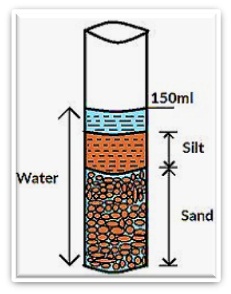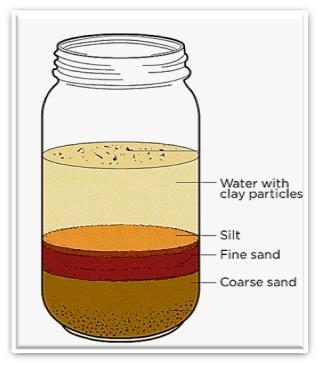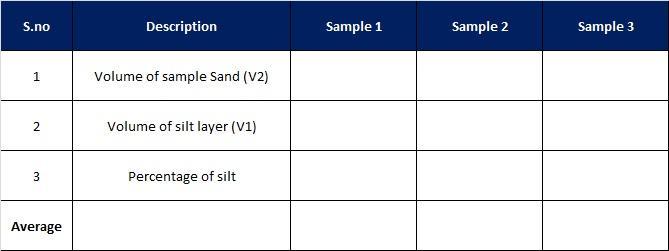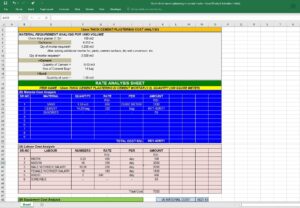The test is performed to determine the percentage of the silt present in the sand is known as the Silt content test. Silt is a fine material whose size is less than 150 micron. As their content in the sand is not good, that’s why we need to find the silt content in the sand.
Why do we Measure the Silt Content in the Sand?

The silt is a very fine particle whose size is less than 150 micron, due to the small size of the material, it affects the mortar and concrete. It reduces the strength and work ability of the mortar and concrete which is not good for our construction work. It gets disturbed in the presence of the water and also loses the bonding in the cement and reduces their durability and strength.
It has several disadvantages due to its presence in the sand:

- It affects the bonding strength between cement and aggregates.
- It absorbs an excessive amount of water.
- It gets disturbed in the presence of water. That’s why we have also noticed that the walls are peeled off.
- It contains salts and evaporated matter due to which some chemical reaction takes place which is not good for mortar and concrete which decrease its workability.
- It also shrinks so crack is developed in the concrete.
- Due to these bad effects, we need to find the silt content in the sand.
Silt Content Test of Sand
Objective
The test is performed to identify the percentage of silt content in the sand is known as the silt content test. (The permissible silt content in the sand is 6%and 7%)
Apparatus
- Measuring cylinder (250ml)
- Salt solution
- Sand
- Tray
- Water
Test Procedure
- First of all, we need to prepare a 50ml solution in which 1% salt and water are added in a measuring cylinder. The salt is added in the solution to increase the settlement time of silt.
- The Sample of sand is tested and then added to the measuring cylinder up to the level of 100ml.
- Again the solution of salt and water is added in the measuring cylinder.
- Then close the open end of the cylinder and shake it properly.
- After 3-4 hours, the layer of silt is settled over the sand which will clearly be visible from the measuring cylinder.
- We need to note the volume V1 of the silt layer which is settled over the sand.
- Note down Volume 2 of the settled sand.
- Repeat the procedure to get an average value.
- Percentage of silt content =( V1 /V2 ) X 100
Where;
V1 – Volume of the silt layer
V2 – Volume of the sand layer
For example, for a given sand sample, if V1 comes out to be 10 and V2 is 140, the %age of silt content would be 7.14%.
The allowable value of silt content in the sand is 8%, hence the sand is ok and also will use for our construction work.
Observation table

The following table is used as sand silt content test format




